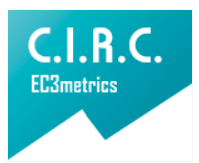Effects of TENS for dysphagia adults with stroke
Efectos de la Electro-Estimulación Neuro-Muscular en adultos disfágicos con secuelas de Accidentes Cerebro-Vasculares: Revisión de literatura.
Main Article Content
Introduction: One of the tools currently used as a therapeutic adjunct in the rehabilitation of neurogenic dysphagia is neuromuscular electrostimulation (NMES), considered a non-invasive technique, applied through electrodes in a transcutaneous way. Neuromuscular electrostimulation aims to promote the movement of the hiolaringeal complex and favoring the muscular groups directly involved in swallowing, hence the importance of conceptual, theoretical and procedural support for the Technician’s attention in the Speech-Language Pathologist. Methods: Systematic review was based on the Prisma methodology, the databases Scielo, Lilacs and PubMed were consulted using the descriptors “Deglutition”, “Cerebral Vascular Accident”, “Dysphagia”, “Electrostimulation”, “Effects” (Swallowing, Stroke, Dysphagia, Electrostimulation, Effects). Results: 79 studies were found related to the descriptors used, 13 studies when the descriptors were related to the technique of Functional Electrostimulation. Most of the studies selected and reviewed showed beneficial effects as a result of traditional therapy combined with NMES, these effects were: significant changes in oral intake level, greater significance in the penetration scale, and Aspiration with decrease in oral and pharyngeal transit time of swallowing. Conclusions: Studies investigated showed that NMES is an effective tool when used in a complementary way with traditional therapy for dysphagia in cases of stroke.
Downloads
Publication Facts
Reviewer profiles N/A
Author statements
Indexed in
- Academic society
- Bogotá: Corporación Universitaria Iberoamericana
- Publisher
- Bogotá: Corporación Universitaria Iberoamericana
Article Details
Kiger, M., Brown, C., & Watkins, L. (2006). Dysphagia management: an analysis of patient outcomes using VitalStim therapy compared to traditional swallow therapy. Dysphagia, 21, 243-53. DOI: https://doi.org/10.1007/s00455-006-9056-1
Li, L., Shi, J., Yin, J., Qiao, B., Li, Y., & Huang, R. (2014). Study of Transcutaneous Neuromuscular Electrical Stimulation (VitalStim) Therapy for Post-stroke Dysphagia . Rivista di Medicina Fisica e Riabilitativa dopo Eventi Patologici.
Lim, K., Lee, H., Lim, S., & Choi, Y. (2009). Neuromuscular electrical and thermal- tactile stimulation for dysphagia caused by stroke: a randomized controlled trial. J Rehabil Med, 41, 174-8. DOI: https://doi.org/10.2340/16501977-0317
Low, J., & Reed, A. (2001). Eletroterapia explicada: princípios e práticas. (3. Ed. ed.). São Paulo: Manole.
Mancini, M., Cardoso, J., & Sampaio, R. (Nov-Dec de 2014 ). Tutorial for writing systematic reviews for the Brazilian Journal of Physical Therapy (BJPT). Braz J Phys Ther., 18(6), 471-480. DOI: https://doi.org/10.1590/bjpt-rbf.2014.0077
Nam, H., Beom, J., & Han, T. (2013). Kinematic Effects of Hyolaryngeal Electrical Stimulation Therapy on Hyoid Excursion and Laryngeal Elevation 28:. Dysphagia, 548–556. DOI: https://doi.org/10.1007/s00455-013-9465-x
Nelson, R., Hayes, K., & Currier, D. (2003.). Eletroterapia clínica. (3º Ed. ed.). Barueri: Manole.
Park, C, O. P., & Martin, D. (1997). A pilot exploratory study of oral electrical stimulation on swallowing function following stroke: an innovative technique. Dysphagia, 12, 161-6. DOI: https://doi.org/10.1007/PL00009531
Park, J., Kim, Y., & Lee, H. (2012). Effortful Swallowing Training Combined with Electrical Stimulation in Post-Stroke Dysphagia: A Randomized Controlled Study. Dysphagia, 27, 521–527. DOI: https://doi.org/10.1007/s00455-012-9403-3
Park, J., Yong, S., Kim, J., Jung, H., Chang, S., Kim, K., & Kem, H. (2014). Cutoff Value of Pharyngeal Residue in Prognosis Prediction After Neuromuscular Electrical Stimulation Therapy for Dysphagia in Subacute Stroke Patients. Ann Rehabil Med. DOI: https://doi.org/10.5535/arm.2014.38.5.612
Permsirivanich, W., Tipchatyotin, S., Wongchai, M., Leelamanit, V., Setthawa-tcharawanich, S., & Sathirapanya, P. (2009). Comparing the effects of rehabilitation swallowing therapy vs neuromuscular electrical stimulation therapy among stroke patients with persistent pharyngeal dysphagia: a randomized controlled study. J. Med. Assoc., 92, 259-65.
Robinson, A., & Snyder-Mackler, L. (2001). Eletrofisiologia Clínica. 2ª ed. Porto Alegre: ArtMed.
Salgado, A. (1999). Eletrofisioterapia: Manual clínico. 1º ed. Londrina: Midiograf.
Sampaio, R., & Mancini, M. (jan./fev. de 2007.). Estudos de revisão sistemática: um guia para síntese criteriosa da evidência científica. Rev. bras. fisioter, 11(1), 83-89. DOI: https://doi.org/10.1590/S1413-35552007000100013
Sun, S., Hsu, C., Lin, H., Sun, H., Chang, P., Hsieh, W., & Wang, J. (2013). Combined Neuromuscular Electrical Stimulation (NMES) with Fiberoptic Endoscopic Evaluation of Swallowing (FEES) and Traditional Swallowing Rehabilitation in the Treatment of Stroke-Related Dysphagia. Dysphagia, 28, 557–566. DOI: https://doi.org/10.1007/s00455-013-9466-9
Urrútia, G., & Bonfill, X. (2010). PRISMA declaration: A proposal to improve the publication of systematic reviews and meta-analyses. Med Clin, 135(11), 507. DOI: https://doi.org/10.1016/j.medcli.2010.01.015


















